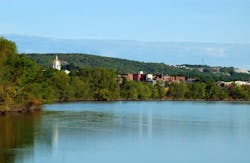Local governments disagree on extended Clean Water Act regulation
Local governments in the United States are trying to find a middle ground on opposing opinions regarding the new federal Clean Water Act rules that have already caused much discussion among farmers and industry on the one hand, and environmentalists on the other.
The conflict boils down to the fact that the proposed rule is not clear, allowing for various interpretations. Supporters of the draft rules say including smaller water bodies as regulated under the Clean Water Act would protect drinking water resources. According to Erika Strassburger, chief of staff to councilman Dan Gilman, who backs the measure, Pittsburgh's large rivers are cleaner now than before the Act was implemented, mostly because it protects headstreams that flow into them.
But opponents argue that the new rules will result in more red tape for construction companies and farmers, who will have to obtain permits under the Clean Water Act. Brian Namey, a spokesman for the National Association of Counties, claimed that the rules only add to the confusion that they were meant to clear up.
The vagueness dates back to 2001, when a series of contradicting court decisions raised questions about what exactly the law regulates. It is obvious that the law regulated navigable rivers and lakes, but the situation is less clear for other water bodies that may or may not have a "significant nexus" to navigable waterways.
Public comments on the proposed rule will be accepted until October 20 and will be taken into consideration by the Environmental Protection Agency before the rule is finalized, Governing magazine reported.
